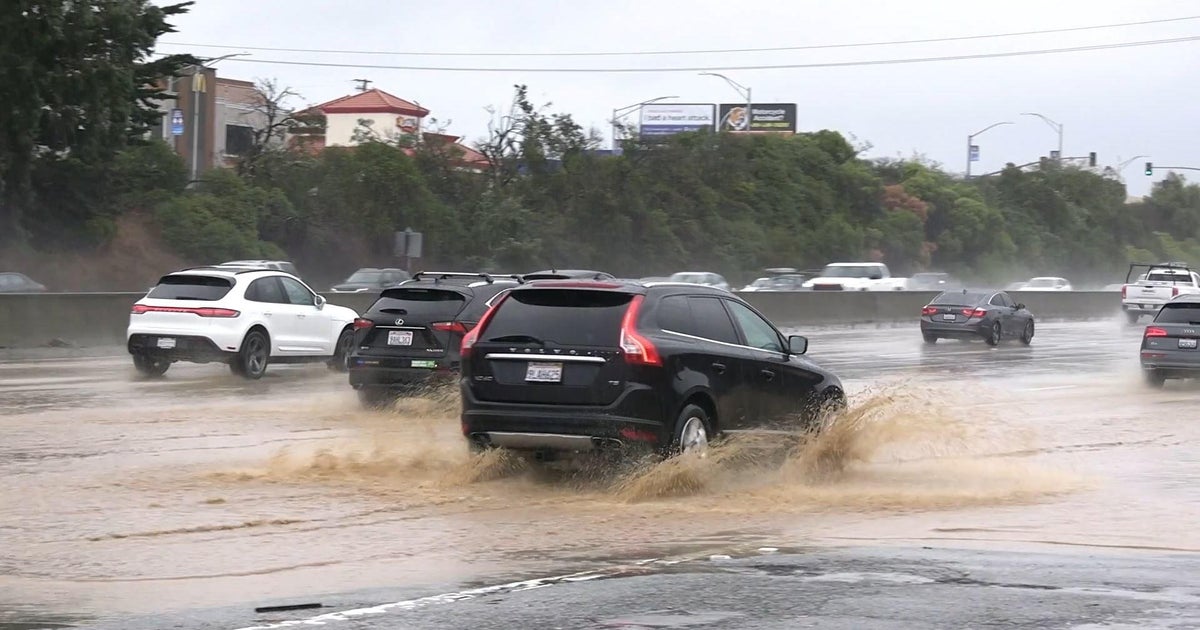More Training For U.S. Pilots To Be Required In Wake Of SFO Crash
WASHINGTON, D.C. (CBS/AP) — The amount and type of flying experience first officers — also known as co-pilots — must have to qualify to fly for an airline will be significantly increased under new regulations announced Wednesday by the Federal Aviation Administration.
The regulations require first officers to have at least 1,500 hours of flying experience. Airline captains are already required to have at least 1,500 hours. Previously, first officers were only required to have 250 hours of flight time.
The rule also requires first officers to have an aircraft-type rating, which involves additional training and testing specific to the type of airplane they fly.
"The rule gives first officers a stronger foundation of aeronautical knowledge and experience before they fly for an air carrier," FAA Administrator Michael Huerta said.
The new regulations are required under a sweeping aviation safety law enacted in 2010 in response to the crash of a regional airliner near Buffalo, N.Y., that killed 50 people. The crash was blamed on pilot error.
The regulations are a victory for the family members of victims of that crash, who dedicated countless hours over the last four and a half years, first to lobby Congress for passage of the law and later to push the Obama administration to carry through with the regulations despite industry opposition.
The law required the FAA to implement a series of safety regulations. Changes to the first-officer qualifications, which had remained unaltered for many years, are considered among the most important. Two years ago, the FAA adopted regulations also required under the safety law that set new policies governing airline pilot work schedules aimed at preventing dangerous errors made by tired or overworked pilots.
The question of pilot experience is one of the issues raised in the investigation of the crash landing of Asiana Airlines Flight 214 in San Francisco on Saturday. The Asiana pilot flying the plane, Lee Gang-guk, had nearly 10,000 hours of flying experience, but was transitioning to a new type of plane. He had recently received his type rating and was about halfway through his post-rating, real-world training.
Two of the 307 people aboard the plane were killed and scores of others injured.
The Asiana accident shares some similarities with the Buffalo crash. Like the Asiana pilot, the pilot of Colgan Air Flight 3407 also had relatively little experience in the type of plane he was flying.
The Colgan Air pilots also weren't paying close attention to airspeed, allowing the regional airliner to slow dangerously. That triggered a warning that the plane was losing lift and about to stall. The Asiana plane also slowed dangerously, triggering the same type of warning and raising questions about whether the pilots were monitoring the airspeed.
There was nothing mechanically wrong with the Colgan plane, and there was a brief period in which the pilots possibly could have saved the plane if they had acted correctly, NTSB determined later. Instead, the captain pushed the plane into a full stall, sending it plunging into a house below.
Citing the similarities, two New York Democrats — U.S. Sen. Charles Schumer and Congressman Brian Higgins — called on the FAA to issue other long-delayed safety regulations on pilot training and flight simulator training that are also required under the safety law. The rules would require, for example, that pilots undergo more extensive training on how to prevent stalls and recover if a stall occurs.
"While the (Asiana) investigation is still ongoing, one thing is clear, this crash and the other recent crashes like Flight 3407 demonstrate a troubling pattern in which pilots are mishandling airspeed, which can lead to fatal stalls," Schumer said.
The regulations issued Wednesday are expected to have the greatest impact on safety at regional air carriers, where entry-level pilots are typically hired with only a few hundred hours. Pilots at major airlines typically start out with more experience and are often drawn from regional carriers.
"We want to get the best pilots possible into the cockpits, and then we want to set them up for success," said Scott Maurer, whose 30-year-old daughter, Lorin, was killed in the Buffalo crash.
The regulations also have important implications for pilots at major carriers. For example, first officers now must have 1,000 hours of flying experience in the type of plane they fly before they can be promoted to captain, said Jeff Skiles, a US Airways pilot who lobbied to get the regulations. The practical result is that first officers will probably have to spend a year to a year and a half flying a particular type of plane before they can qualify as a captain in that plane no matter how much previous experience they have flying other aircraft, he said.
Skiles was the co-pilot of the "Miracle on the Hudson" US Airways plane that lost thrust in both engines after colliding with a flock of geese. The skillful flying of Bay Area Capt. Chesley "Sully" Sullenberger and teamwork by Skiles have been credited with a near-perfect water landing on the Hudson River between New York and New Jersey that helped save the lives of all aboard the airliner.
He predicted the new requirements will save lives.
(Copyright 2013 CBS San Francisco. All rights reserved.)



